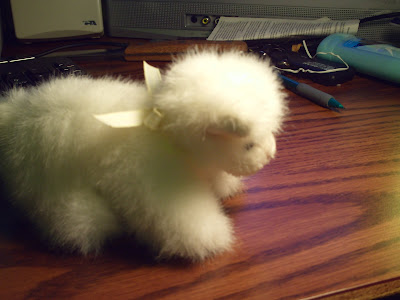My experience with store bought spray chalk has been somewhat mixed.
Molotow Tech Streetwise Chalk Pigment (black) - definitely NOT temporary. If you are going to use this, you might as well use paint because unlike paint this chalk will fade, but never be completely removed. Besides that though, great crispness and works just like spray paint
Super Spray Chalk made by Rapid Mounting & Finishing Co. - temporary! Works on sidewalks, brick, etc without leaving permanent marks. Downsides are that it uses a pump-action sprayer (like tilex or the likes) and is more watery. This means a stencil out of printer paper will not cut it. Even posterboard is pushing it because it will curl when wet. For stencils made from plastic film though it is fine.
There is an excellent site with more results of other commercial spray chalks
here.
_________________________________________________
Homemade spray chalk:
I tried two different recipes. The first I found on the internet in several variations but all had the same ingredients. Below are the proportions I used.
4 tablespoons cornstarch
10 tablespoons hot water
6 drops yellow food coloring
4 drops red food coloring
Using a funnel, I put all the ingredients directly into the spray bottle I had from the Super Spray Chalk. However, probably any squirt bottle would work. Just be sure if it was a cleaner or other chemical bottle that it is thoroughly cleaned out first. You can use whatever color food coloring you want. I made orange this time. If you use food dye for cake decorating, you will no doubt need a lot less but will need to experiment with it.
Results:
Each time before use it needs to be shaken vigorously because the cornstarch tends to settle. It is still watery; about the consistency of milk. On sidewalk concrete it took about 7 sprays in one location to create an opaque orange, so may need some more coloring next time. It never clogged, and washed off with the next rainfall. Overall, a definite success! I'll have to test each new food coloring though because some may stain.
The second recipe was more complicated and improvised, but just used standard stick chalk and water.
Half a stick of chalk
10 tablespoons of hot water
Either a mortar and pestle or a hammer and zip-lock bag
Fine strainer (for powder) or grocery bag, funnel and pin
I didn't actually have any materials for turning the chalk into powder, so I improvised. If you have a mortar and pestle, more power to you! If not, put the chalk into a ziplock bag. Double bag it or tape the corners if you're worried about some powder leaking. Use the hammer to hit it on a somewhat soft surface - I used a thinly carpeted floor (if you do it on a hard surface, the chalk will just compress). Continue until it looks like this:

Once it's in small enough pieces, move it to a hard surface such as a desk or wood floor. Now use the top of the hammer and rotate it to crush the remaining pieces into as fine a powder as you can.


Now add this mixture to 10 tablespoons of hot water. Mix as well as possible. Now if you tried to use this in the sprayer it would clog for sure. I poked some pinholes in a plastic bag and put it in a funnel to try to sort out the larger pieces.

Once shaken to mix thoroughly, it worked pretty well. There was still some clogging, so in the future I may have to try using a coffee filter or nylons to try to get the small pieces out. If it does get clogged, I've found a good way to clear it is to take off the sprayer, put a finger over the intake tube, and squeeze the trigger. This usually clears a clog.
Results: Needs to be shaken before use; consistency of milk, washes off in the first rainstorm. The color is quite brilliant, but the nozzle does clog fairly regularly. With a better grinding or filtering technique it could be a good recipe.

Each recipe only makes half a bottle of spray chalk (These are 7oz bottles).





















































